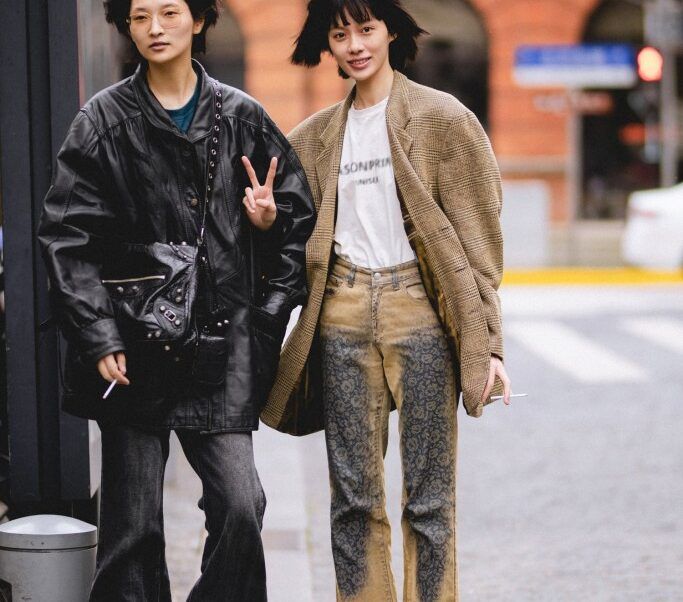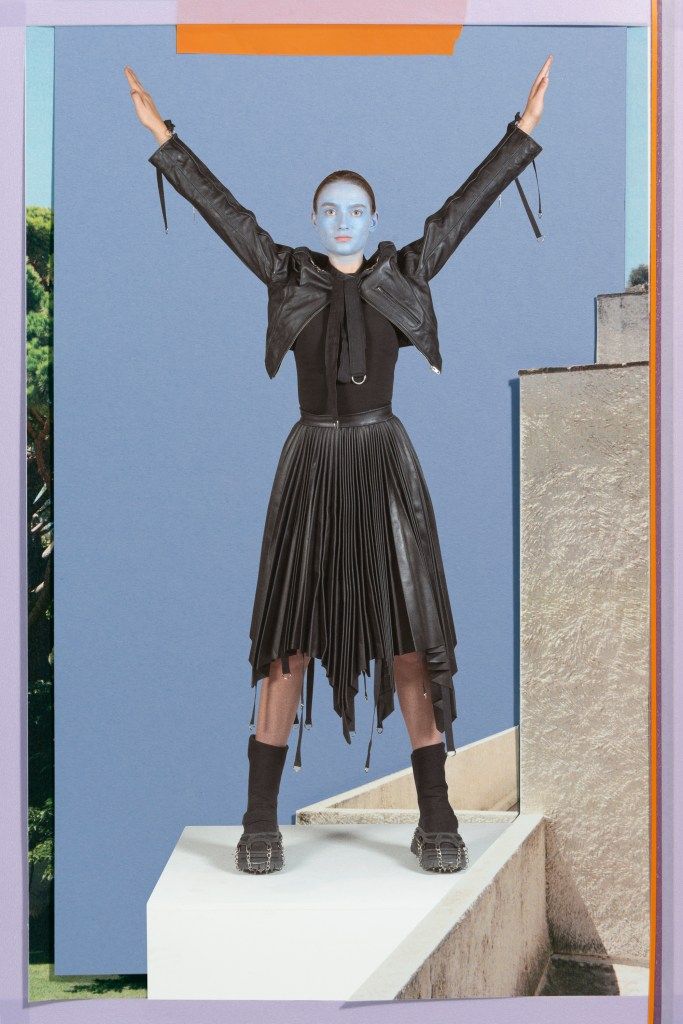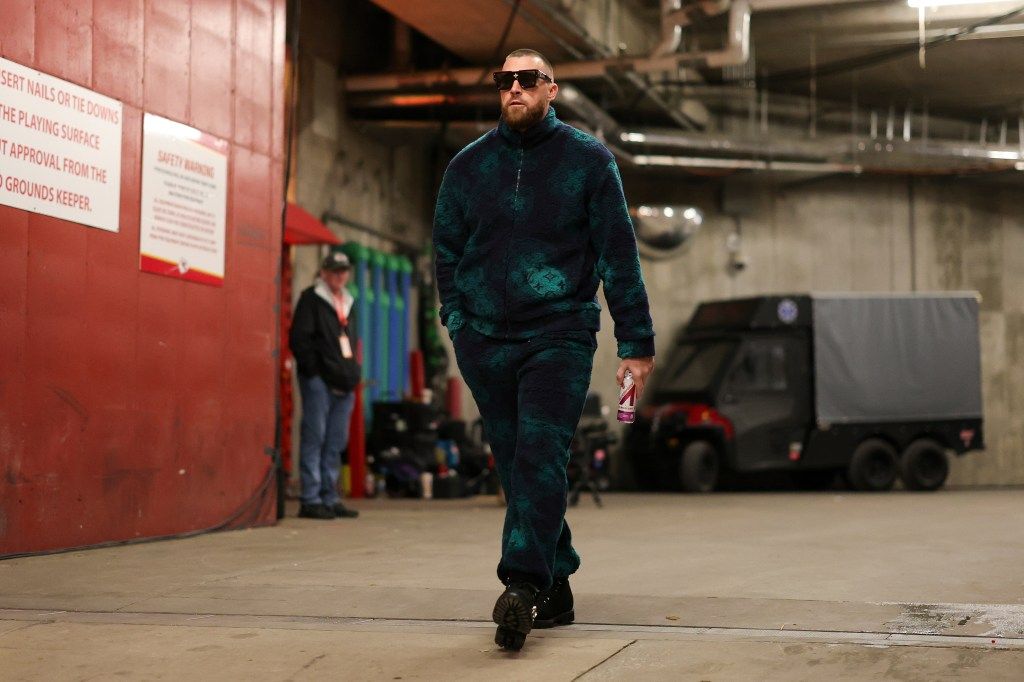Shanghai Fashion Week is gearing up for a full return amid slower economic growth and weakening demand.
Around 100 brands will begin to present their spring 2024 collections across four official venues on Sunday, and 13 official trade show partners will welcome buyers from China, France, Vietnam and the U.S.
Designers and retailers said they are prepared to embrace a tougher market and have been exploring new opportunities to grow amid economic headwinds.
China’s economic data has indicated a gloomy future ahead, with the property sector in particular under immense pressure. In China, around 70 percent of household wealth is tied to housing. A Reuters poll of 76 analysts last month predicted the Chinese economy would grow 5 percent this year, lower than the 5.5 percent forecast in a July survey.

Susan Fang RTW Spring 2024
Courtesy of Susan Fang
Canadian Chinese designer Susan Fang, known for her romantic layered chiffon dresses, beaded bags and theatrical showmanship, said the brand is shifting more and more online to achieve “significant growth with unique and meticulously crafted items with higher price points, such as bridalwear, event attire and statement accessories.”
She is also selling more to international stockists such as Mytheresa and 10 Corso Como Seoul, where the brand obtains a 98 percent sell-through rate. “Conversely, we’ve noticed a shift toward conservatism in lower price point shops,” Fang added.
“Building strong connections with our existing clientele and attracting like-minded new customers are central to our strategy in these challenging times,” she said, adding that she will present her first artwork launch with a contemporary dance and fashion presentation on Tuesday.

J E Cai RTW Spring 2024
Courtesy of J E Cai/Maja Smiejkowska
The London-based Jiaen Cai, a Royal College of Art alum who made his runway debut in London last month, this season will resume selling with Tube Showroom, a brand accelerator that expanded into experiential retail earlier this year.
Cai said in order to cut costs, he outsourced some of the product developments in China, while the rest was developed in his studio in London.
In his opinion, middle-range-priced independent designer brands are facing the most amount of challenges as China’s middle class tightens spending.
“For survival, they tend to develop cheaper products and make the industry competition environment more hostile to young brands. But my plan is to keep developing good-quality items for my Algorithmic Modular System, and not fall into this trap,” he added.
Inspired by the Taoism classic “Tao Te Ching,” his concept behind the system is similar to playing with Lego. Each piece of apparel can be disassembled into different components and reattached to create new looks.

A preview of Danshan rtw spring 2024
Courtesy of Danshan
Danxia Liu, cofunder of the men’s label Danshan, also believes that it’s imperative to “put design and product development at the forefront of everything we do, regardless of the current economic situation. Even with limited resources, we always strive to come up with new ideas and innovative ways to showcase our designs and connect with our audiences.”
The London-based brand will return to Shanghai for the first time since the pandemic with a “unique and intimate” presentation on Tuesday. The collection will be presented in five immersive acts, each featuring different looks and performers.
“The ability to touch, feel and wear a garment is what truly brings fashion to life. This is why we are excited to return to Shanghai. Collaborating with like-minded individuals allows us to connect in person and build strong relationships. As much as we value digital communication, nothing can replace the power of face-to-face interaction,” she added.
Alex Po, cofounder of the gender-inclusive label Ponder.er, said the brand adjusts the product range every season according to how the markets react to past collections.
“Although the economy is tough worldwide, we see increasing interest in unique denim pieces and materials that are comfortable to wear but at the same time allow customers to experiment with their styles. I feel that a lot of customers are still very willing to engage in new concepts and fantasies, we think the new generations are very open-minded in terms of breaking gender boundaries and stereotypes,” he noted.
For fashion jewelry label Soft Mountains’ founder Longhong Ziwei, a taste of livestreaming on Xiaohongshu has helped the label explore market potential with a different state of mind. Inspired by the Yi ethnic group, the label offers earrings and necklaces that range from 800 renminbi, or $111, to 1,500 renminbi, or $208.
Telling better stories and delivering what the creative and designer would like to express may gain more consumer preference and build a good foundation in the long run.”
England Cheng, brand consultant
“Livestreaming is actually a good exercise for brands, especially designer brands. It’s a litmus test for the company’s service capacity, supply chain, and the ability to adapt to market needs,” Ziwei said. “To grow a brand under this climate is like playing Super Mario, you have to quickly adapt.
“Because of livestream exposure, customers are going to multi-brand stores to seek out our products, in turn, a wholesome retail experience can effectively translate to livestream results,” Ziwei added.
Eric Young, founder and buying director of the Shanghai-based fashion boutique Le Monde de SHC, said he won’t increase the budget for this season, but he has been adjusting the brand mix constantly post-COVID-19 to keep the customers excited.
“We continue to introduce new brands with outstanding design, quality and price, such as Niccolo Pasquelatti, All In, Feben, Jacques Wei, with whom we worked on an exclusive fur capsule, and veteran designer Ian Hylton’s latest venture Xiangsheng. From this year, we also started offering bespoke services to our customers with the brands that we work with. It’s been a great experiment, and more are becoming regulars,” Young said.
Will Zhang, founder of SND, a fashion boutique that originated in southwest China and has been expanding nationwide with 14 boutiques in Chongqing, Shanghai, Guangzhou, Shenzhen, Guiyang, Sanya and more, said he has been buying more conservatively and plans for further physical expansion are halted for now as well.
“Our current brand portfolio direction is to retain some of the more internationally recognized brands and remove some of the niche ones. Our customers are no longer responding to the exaggerated and pioneering pieces, they are buying more affordable products with simpler designs,” he said.
Zhang also said that SND has been investing heavily in online channels as Chinese fashion consumers’ shopping habits have changed immensely over the past three years.
“Xiaohongshu, Douyin, Taobao and Tmall all come with livestreams, and the choices to shop online are plentiful. Almost all Chinese concept stores are doing it, and many consumers get to know new brands and trends because of this. We have orders coming from everywhere in China via livestreams. Showing what’s new with video content on Xiaohongshu and Douyin is also key. They help drive offline traffic,” he added.

Windowsen rtw spring 2024
Courtesy of Windowsen
In order to compete in livestream selling, Chinese designer brands had to adjust to a relatively lower price point to gain more sales, as observed by brand consultant England Cheng.
“With the rise of livestreaming, brands are forced to compete mostly on price instead of quality or design. The lower the price, the more traffic and sales you can get. Brands have to lower costs in all aspects in order to reach a lower price point. However, smaller brands have a lower minimum order quantity. They can’t run up the quantities by lowering the costs. It is a big challenge,” Cheng explained.
She believes that the only way to rise above the competition is to focus on brand building.
“Telling better stories and delivering what the creative and designer would like to express may gain more consumer preference and build a good foundation in the long run. If the consumers are able to understand more the value of brands, fashion, art and culture, that benefits the whole industry. And a more holistic and healthy ecosystem could be formed gradually,” she added.
Excitement can come from awareness, design, commerciality, etc.”
Meimei Ding, founder of fashion showroom and brand accelerator DFO
Olivia Chen, founder of the Shanghai-based brand and retail strategy firm OKYC Projects, agreed that “the perceived brand value plays a pivotal role in determining what a customer is willing to spend,” especially when consumers remain price conscious.
“It’s become more crucial than ever for designers to be able to articulate their uniqueness, evaluate the coherence of their branding, products and communication, and establish a genuine connection with their community. Against the backdrop of quiet luxury, consumers are seeking also ingenuity and excitement. It’s an environment that presents opportunities for designer brands that are affordable or moderately priced, while premium-priced emerging designer brands may encounter challenges,” Chen added.
She called this period “a phase of self-examination” for local designers.
“For brands with a well-established identity, this may involve a focus on the commercial aspects, such as reorganizing their product range and pricing strategies. On the contrary, for brands that have historically been more volume-driven, in some cases offering a wide range to cater to a broad audience, the process has entailed introspection to define their brand’s core essence and delineate what it represents and what it doesn’t.
“Irrespective of the approach, it’s a demanding process to develop long-term strategies to extend the brand’s growth. But they are making necessary adjustments to position themselves effectively and while it presents its challenges, I believe that in hindsight, this period will be recognized as a significant step forward for Chinese designer brands,” she concluded.

Models take part the Shuting Qiu show during fall 2023 Shanghai Fashion Week.
Future Publishing via Getty Images
As brands at different stages continue to reassess their developments in China, it leaves less space for newcomers.
Bohan Qiu, founder of BoH Project, a Shanghai and Seoul-based agency with clients including Mugler, Dries Van Noten, Calvin Klein, Amiri, Rui, Yueqi Qi and Windowsen, noticed that fewer new brands are coming out after the pandemic in Shanghai, “compared to during COVID-19 when there was a large number of Chinese talents returning home to start their own venture and brand.”
“I could feel that people are slightly more reserved with putting on grandiose shows like back in 2021, but taking a safer approach and focusing more on the clothes itself,” he noted.
That said, the schedule is busier than during pre-pandemic times. Chinese fashion label Icicle, the owner of Carven, will kickstart the nine-day showcase on Sunday with a runway show at the Xintiandi official venue.
It will be followed by a packed calendar featuring buzzy local talents such as Tommy Zhong, WMWM, Staffonly, Yirantian, Haizhen Wang, The World Is Your Oyster, Mark Gong, Oude Waag, Swaying/knit, Ponder.er, Shie Lyu, Shushu/Tong, Xu Zhi, and power players like Edison Chen’s Clot, Mark Fairwhale, Chau Rising, Comme Moi, Cplus Series, Semir and Balabala, one of China’s biggest kids’ clothing brands which launched a collaboration with Kris Van Assche last year.
Stella McCartney will make its Shanghai Fashion Week debut to close the showcase on Oct. 16 with a repeat show of the brand’s spring 2024 women’s collection, which was revealed during Paris Fashion Week. A collaboration will be revealed at this time as well.

Rui RTW Spring 2024
Courtesy of Rui
Bohan revealed that Rui Zhou, who just shown in Paris with a sultry presentation that has gone viral on social media, will build a synchronized yet different experience locally for the Chinese audience and community, while fashion retailer Machine-A will present a Chinese designer showcase in its Shanghai flagship.
While the pace is slowing down, Qiu believes that Shanghai remains an attractive spot for local and international players, as his pipeline is filled with major brands looking to do shows or activations in Shanghai later this year and in 2024.
“It’s still a market and city that attracts local and international brands to make noise that will resonate across China. There are also more and more visitors this year coming to Shanghai, from luxury brands to new designers alike. This year it feels like the city is reshuffling itself, finding a new position in the international fashion world, and also searching its way to become more global post-COVID-19,” he added.

Études store in Shenzhen, China, operated by theImmersive.
Courtesy of Études
Qiu’s sentiment was echoed by Meimei Ding, founder of fashion showroom and brand accelerator DFO and chief brand officer at theImmersive, a brand development joint venture founded by DFO and New Accolade Group, a subsidiary of the Chinese streetwear label Inxx. DFO’s clients include Soulland, Soeur, Christian Wijnants, System, Stine Goya, Fiorucci, Tibi, Joseph, Études and GCDS.
“To be honest, our brands are performing quite fine. All of our key brands have rebounded very nicely this year. I think this is due to the fact that they already have a certain level of awareness, the merchandise is designer [fashion quality] but still wearable, and their supply chain is more stable, so they can resist the current economic situation. Also, we are graced by our stable and strong buyer network,” Ding said.
She believes that the opportunities lie in how exciting a brand can be for the Chinese market, and if the brand can catch that momentum and build on it.
“Excitement can come from awareness, design, commerciality, etc. For DFO, after expanding to PR, social media and e-commerce, this year we are starting to move into physical retail by setting up monobrand stores for our brands. For more mature designer brands, we believe this is a key opportunity for them to build their own visibility,” Ding added.

Shanghai Fashion Week’s main fashion show venue at Xintiandi.
Courtesy
Xiaolei Lv, secretary-general of the Shanghai Fashion Week Committee, said they are taking on more partnerships to help local designers reach a wider audience.
“This season we are welcoming back more international buyers and media, as well as working with the digital wholesale platform Joor to provide better visibility and trade support for designer brands,” she said.
“Meanwhile, based on our experience in China’s unique online ecosystem over the past three years, we will also further communicate the talents and their new collection directly to the mass market through a series of initiatives, such as livestreamings on Douyin, and the relaunched consumer-facing shopping event Fashion Weekend,” added Lv.




